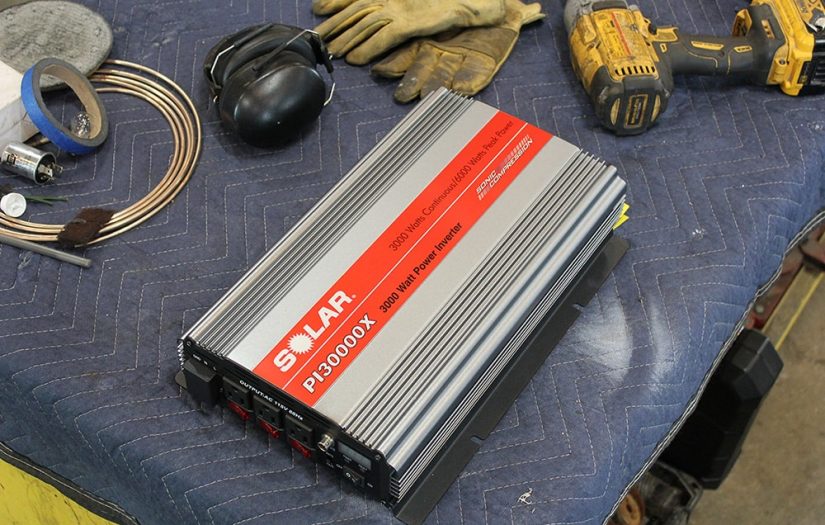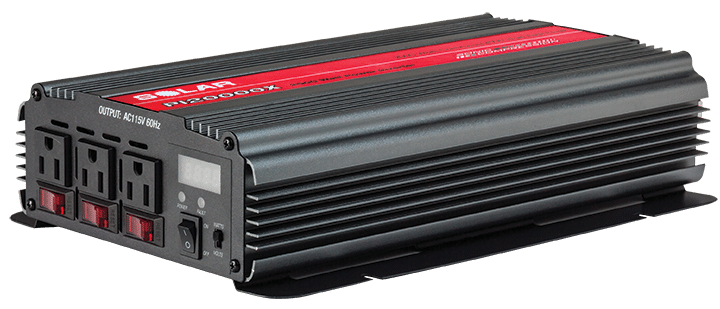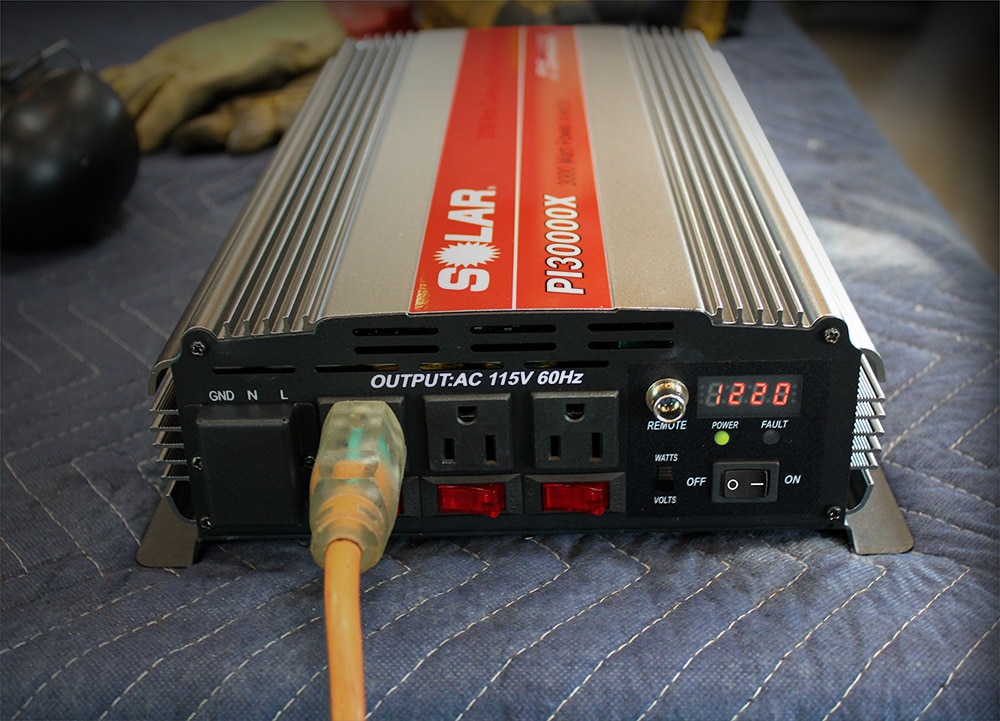At a recent show, we had many conversations about our Industrial Grade power inverter offering, specifically our Models PI20000X and PI30000X – 2000W and 3000W Power Inverter models, respectively. It often feels like there’s a lot of misinformation around inverters: how they work, how they should be installed in a vehicle or other usage instance and what is needed for a specific application or use case. So, we thought we’d recap some of the specifics we covered at the show, thinking that if we have that many questions at a 2-day show, our larger readership probably have a lot of questions also.
How they work – Power inverters are designed to provide the AC power needed to run equipment, tools, electronics and other devices when access to mains AC input is not available. They do this by “inverting” power from a DC power source, typically a battery, into AC output, essentially providing mains AC power on the go. A typical scenario where an inverter is needed is a utility service truck. It’s on the road all day, but the technician manning that truck often needs to operate tools and equipment designed to run off AC power. So, he or she installs a power inverter into the truck to provide AC power.
Power Inverter Installation – When it comes to deploying a power inverter, it is important to remember that the inverter is one part (a key part, but still just one part) of the total system, which also includes your DC power source (battery bank) and your connection cables. All of these elements need to be matched for optimal performance. If any one of these elements is substandard, it will drag down the capability of the entire system. For example, we regularly get calls from customers who purchased our 2000W power inverter model but are only able to get 900W from it. We immediately ask what they have it connected to, in terms of total battery capacity, and how it is connected. That’s when we find out that they are using #4 AWG cables from the battery bank to the inverter, which is throttling down the inverter’s capability. For the 2000W inverter, we suggest using 4/0 AWG cable, which is almost twice the energy carrying capacity of #4 AWG cable.
What is Need for a Specific Application – This one isn’t quite as easy to answer, but we can provide some general guidelines to help provide a framework for answering this question. Here is an excerpt from our Power Inverter Operator’s Manual that addresses this specific question:
Another very important determinant of the success of your installation is the battery capacity allocated to your power inverter system. It is only by providing the necessary 12 Volt input power that you can achieve the maximum rated output of the power inverter.
There are many different ratings used to value the energy stored in a battery. Most starting batteries rate their power using “Cranking Amps” or “Cold Cranking Amps”. While these ratings are a very good way to determine a battery’s viability in a specific starting application, they are of little use when determining if a specific battery is suitable for a power inverter system application.
Deep Cycle batteries are usually rated in either Reserve Capacity (expressed in minutes) or Amp Hours. Both of these measures provide a rating of how long the battery can provide power, either expressed as how long a battery can provide a certain power output (Reserve Capacity Minutes) or how much power can be delivered over a certain timespan (Amp Hours).
To determine your power requirement, and therefore your battery capacity requirement, you will need to combine the power needs of all of your typical daily applications, or uses, of the power inverter system.
First, determine the wattage requirement of each tool, electronic item or appliance that you will use, which is usually listed on the item. To determine the power draw in watts of an item that is listed only in amps, multiply the amp draw times 120. Then, for each item, determine the length of time each item will be powered. Multiply the wattage requirement times the hours for each item, which yields the watt-hours required for each.
Add the watt-hours for all items to get a total watt-hour requirement. Then, multiply the total watt-hour requirement (for all items) times the number of days between charging your battery(ies). (Note: This step is unnecessary if you plan to recharge your battery(ies) nightly.) Divide your total watt-hour days by 10 to derive your amp hour requirement.
Note: If a battery you are considering is rated in Reserve Capacity, use the following formula to convert reserve capacity to amp hours: (Reserve Capacity/2) + 15.5 = Amp-Hour Rating
We recommend that you create an installation with a total capacity at 1.75-2.5 times your derived amp hour requirement. This will allow you to perform unanticipated applications or delay your normal charging cycle without detriment to the system (by over-discharging the system’s batteries) or your planned applications. In the above example, you should plan to provide between 700 and 1100 total Amp Hours in battery capacity, depending on the variability of your application needs or the sureness of your recharging schedule.
Pure Sine Or Modified Sine – another aspect of this product category we fielded a lot of questions on was the need (or lack thereof) to invest in a pure sine wave inverter. Opinions vary on this topic, but here’s our take. Our modified sine wave inverters provide very clean power, such that they can power inductive motors, power tools, microwaves and more with no issue. So, unless you are running lab equipment, scopes, medical equipment or very specialized equipment, you should have no problem using our 2000W and 3000W power inverter models. For typical installations, such as utility service trucks or mobile tool trucks, our inverter models perform excellently.
We hope this spotlight on power inverters is useful and educational for members of our audience. In addition, we hope that it might have cleared up any questions that you may have related to these products. If you’d like to dig deeper, we strongly recommend check out our Operator’s Manual, which can be found on the catalog page of any inverter model.






